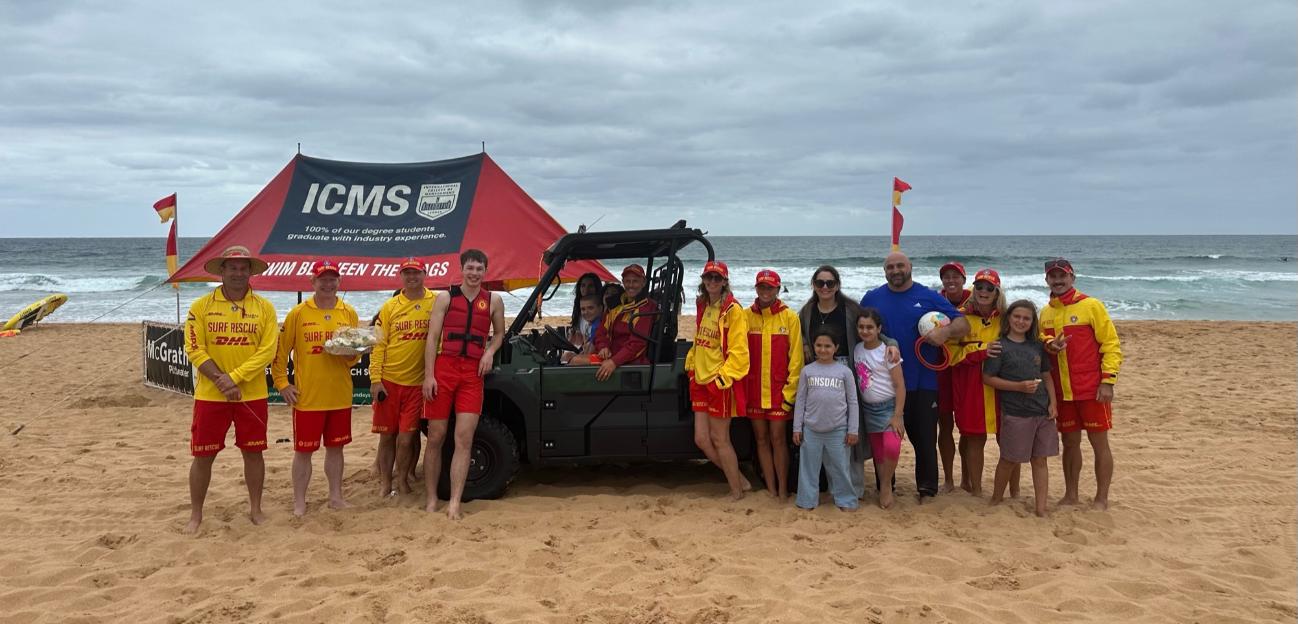Almost 100 Drowning Deaths + More Than 5,000 Lives Saved This Summer

Azam and his family were visiting Avalon Beach from Homebush In December 2023. They were very grateful for the work of Avalon Beach SLSC volunteer Patrol teams do to keep everyone safe on the beach.
They had been warned about not swimming near the rip in front of the surf club, as their son was about to go in there.
To show their appreciation for this preventative action and for the Patrol explaining the risks, they brought down a delicious tray of cooked lamb kebabs and sausages with flat bread for the entire patrol team.
Azam and his kids were shown the other rips were on the Beach that day, and where the safe spots to swim were.
Avalon Beach SLSC encourages the public to ask Patrols and learn more about swimming safely at our beaches. Please bear with them though if you ask on a busy busy day.
You don't have to provide a tray of kebabs or anything to the volunteer surf lifesavers. The service is free!
Photo: Avalon Beach SLSC's Patrol 7 with Azam and his family. Pic: ABSLSC
A Summer Drowning Report released by Surf Life Saving Australia on March 1, 2024 has shown that tragically there were 99 drowning deaths this summer across the country with more than half occurring on the coast.
This number would have been much worse if not for the efforts of volunteer surf lifesavers across the country with more than 5,700 rescues, 25,000 first aid treatments and 1.3 million preventative actions taken by surf lifesavers and lifeguards patrolling beaches across the country.
With more than 1.4 million hours volunteered by surf lifesavers on patrol every year, their actions are estimated to have contributed $1.6 billion economic value to the Australian community during the 2023/24 summer alone.
While the efforts of surf lifesavers are incredible, almost 100 summer drowning deaths were recorded around the country with sadly 55 lives lost on the coast (56%). Three in four occurred at a beach with rip currents again the number one coastal hazard accounting for 29% of drowning deaths.
84% of coastal drowning deaths were male, and regional and remote drowning deaths accounted for 60% of fatal coastal drowning, which is 9% above last year.
Surf Life Saving Australia CEO Adam Weir said: “Beaches around the country are busiest during Summer, with our surf lifesavers and lifeguards increasing their hours and services across Christmas, New Years, Australia Day as well as school holidays periods to meet the demand.
“Volunteer surf lifesavers also save more lives over Summer than any other time of the year.
“Surf Life Saving Australia is grateful to all surf lifesavers and lifeguards who collectively have performed 5,176 rescues and 1,363,588 preventative actions, returning so many loved ones to their family and friends.
“Sadly 55 lives were lost across our coastline this Summer with men again representing more than four in every five drowning deaths that occurred. This summer, 60% of coastal drowning deaths occurred in regional and remote locations, many at unpatrolled beaches” he said.
Weir said that every life lost is one too many and Surf Life Saving Australia is committed to its community education efforts but is also looking at new technologies that can further support front line services.
“Surf Life Saving Australia is committed to working with our States to invest in technology that is tailored to the different regions across Australia and can help us target those ‘black spot’ regions where people are visiting but are currently unpatrolled.
“We have already seen the impact technology is having on our services with the introduction of drones, emergency response beacons and surveillance systems in some States. But we want to be doing more and will be working with our stakeholders to do so.
“With rip currents continuing to be the number one hazard around coastal drowning, Surf Life Saving Australia together with UNSW Sydney are investing in technology to develop a rip current detection smartphone tool using AI – the ‘Rip Eye’. It’s just one of many technological advancements Surf Life Saving is investing in across Australia.
“Public education remains the key and we need to make sure we are continuing to reach as many people, from as many communities and backgrounds, around the importance of coastal safety.
“Our primary message is to swim at the patrolled beach, between the red and yellow flags. But with Australia’s vast coastline, we are always looking at ways to expand our volunteer and lifeguard services,” he said.
With Summer coming to an end, Weir said surf lifesavers and lifeguards will continue working to keep Australia’s beaches safe.
“While this brings to a close a busy Summer, our surf lifesavers and lifeguards will remain on the beach for the next few months, including an anticipated busy Easter holiday period.
“SLSA and surf lifesavers are urging all Australians to keep water safety top of mind when visiting our beaches, understand your limitations and swim between the red and yellow flags,” he said.
Surf Life Saving Australia advise people to:
- Always supervise children in, on and around water
- Learn swimming, water safety and lifesaving skills
- Wear a lifejacket when boating, rock fishing or paddling
- Swim at a patrolled beach between the red and yellow flags
- Avoid alcohol and drugs around water
- Check the conditions, including weather forecasts
At Avalon Beach on Australia Day, January 26, 2024:
Safe!